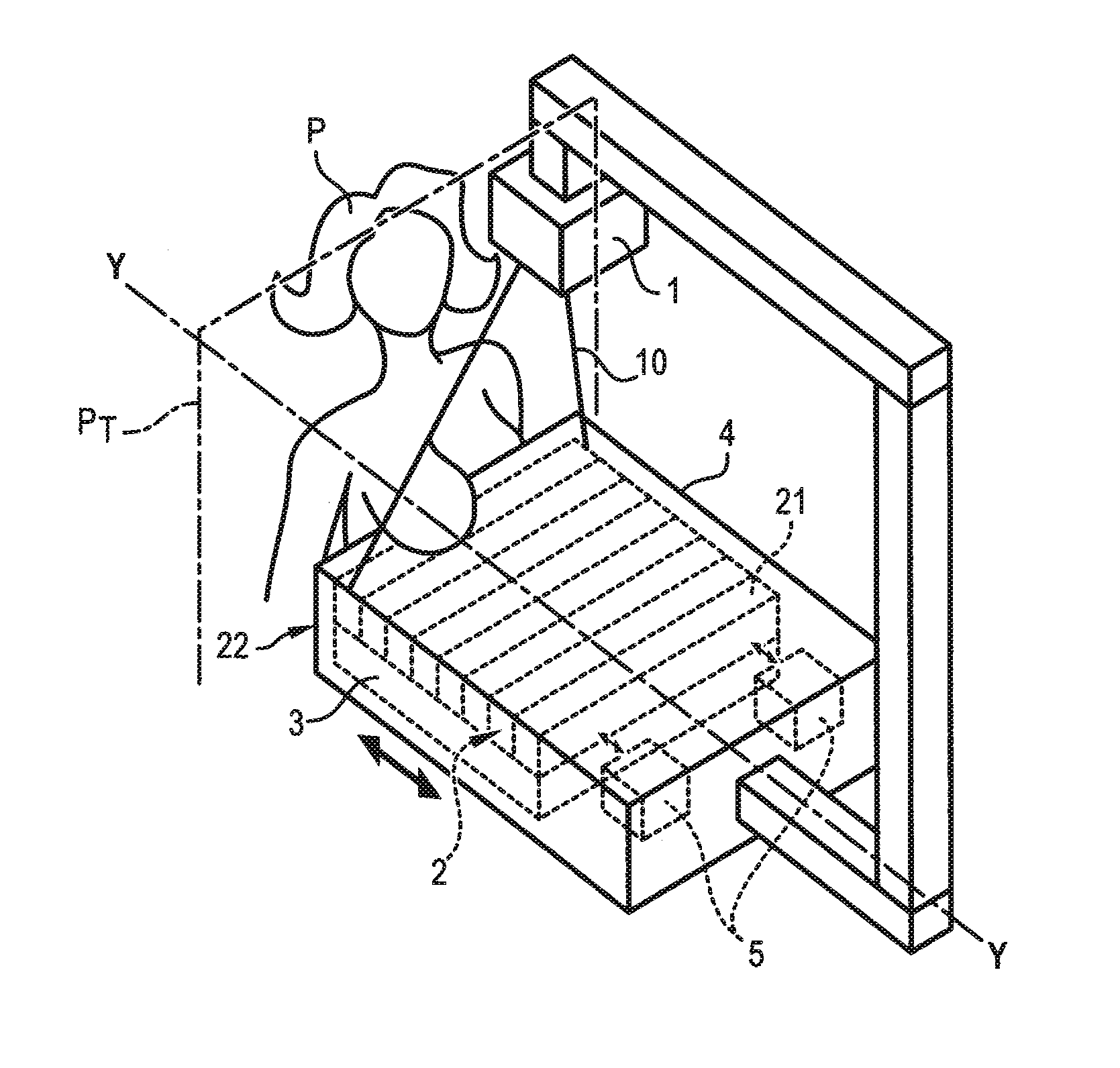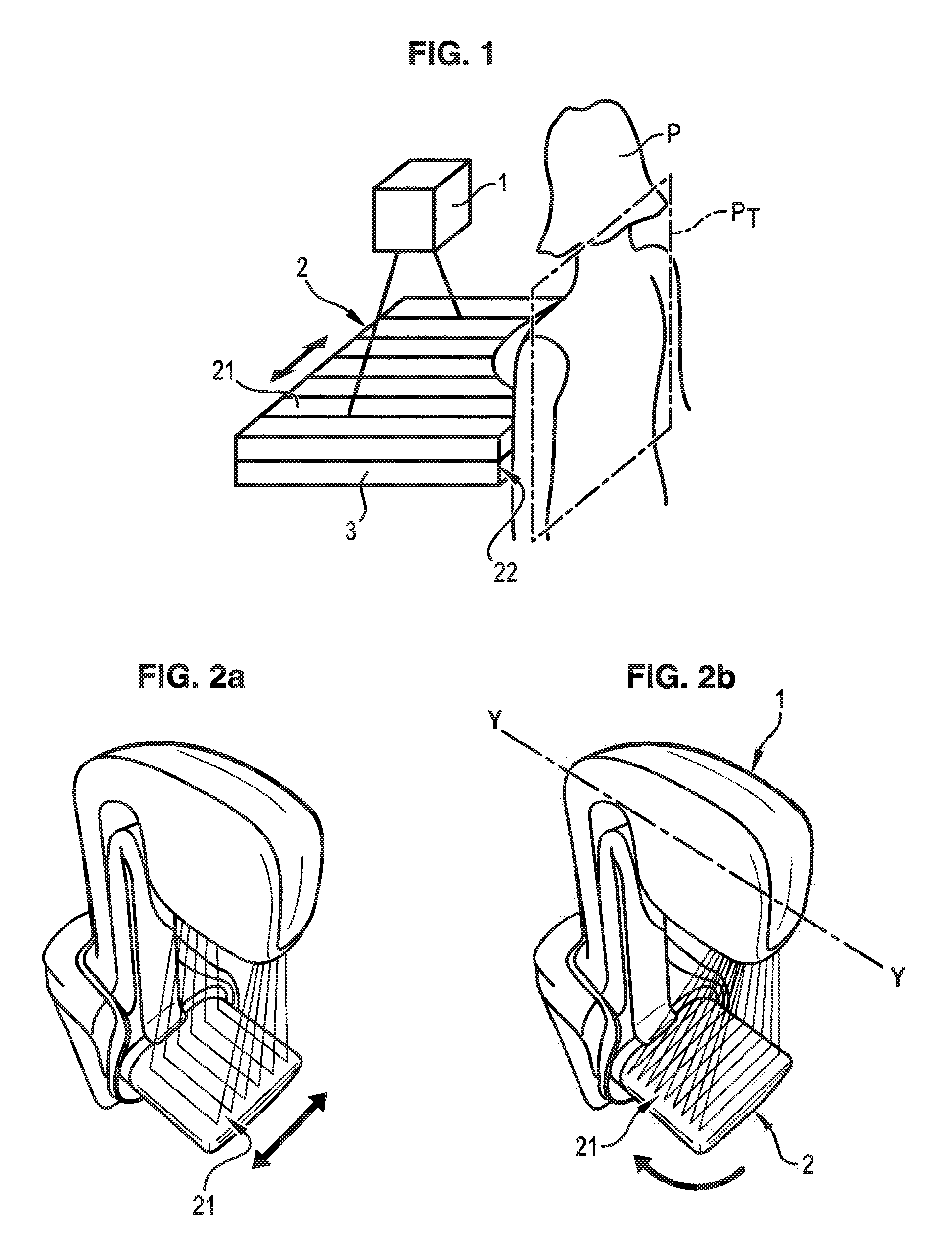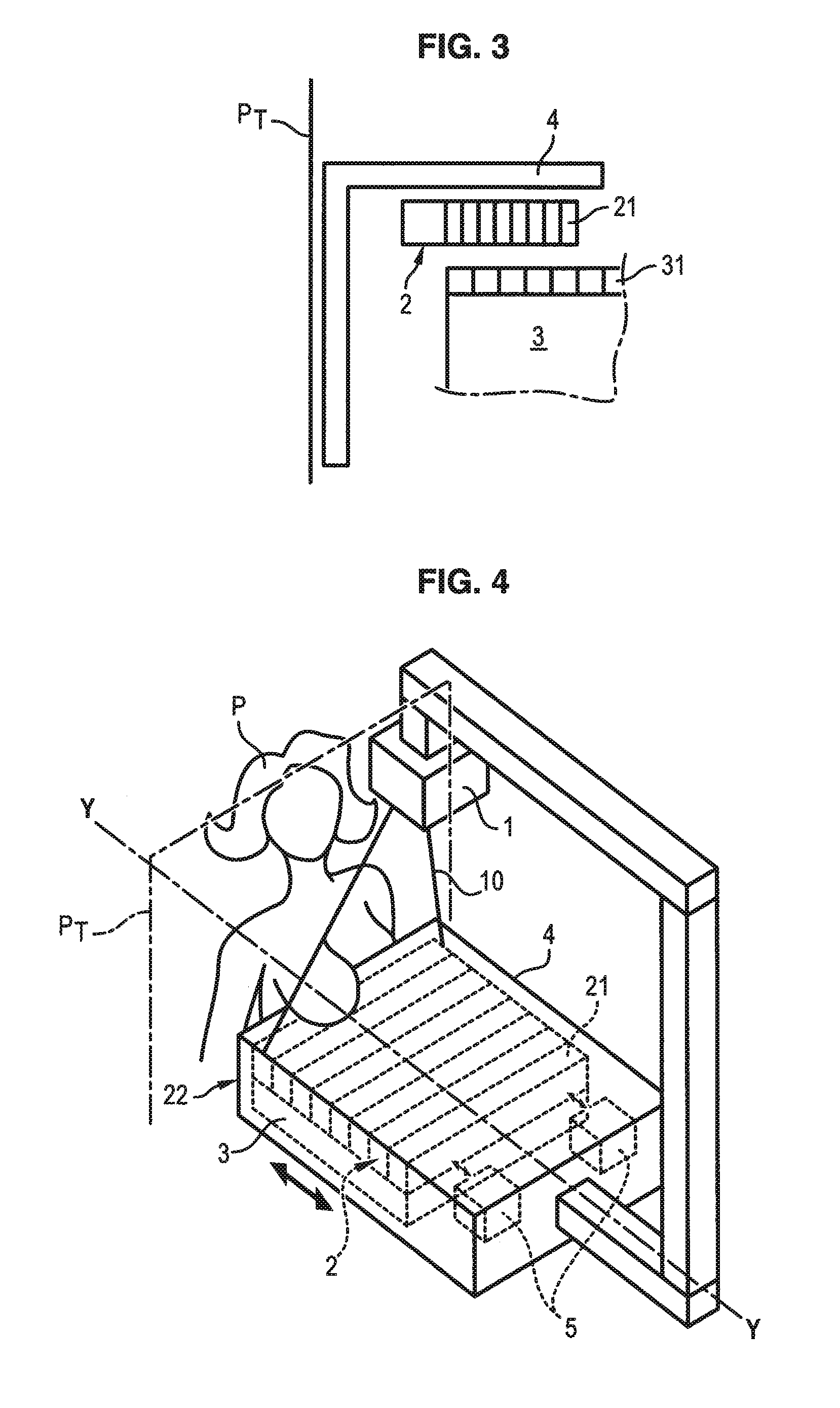Process and device for deploying an Anti-scattering grid
a grid and anti-scattering technology, applied in the field of medical imaging, can solve the problems of deteriorating the quality and legibility of the frame obtained, the image of the grid appearing on the detector,
- Summary
- Abstract
- Description
- Claims
- Application Information
AI Technical Summary
Benefits of technology
Problems solved by technology
Method used
Image
Examples
Embodiment Construction
[0032]In reference to FIG. 4, a mammograph is illustrated comprising a radiation source 1, for example of X-ray type, emitting radiation 10 designed to illuminate the breast of a patient P of whom images are to be taken during a pause time T. The radiations transmitted then reach a detector 3 made up of a network of sensors 31 distributed periodically with a pitch pd of the detector, of the order of 100 to 200 μm.
[0033]An anti-scattering grid 2 is interposed between the source 1 and the detector 3, more precisely between the breast of the patient P and the detector 3, so as to stop radiations scattered by the breast of the patient P not coming directly from the source 1.
[0034]This anti-scattering grid 2 is placed immediately above the detector 3, and is held by means of a cap 4. This cap also forms the support of the breast of the patient to be examined.
[0035]The grid 2 comprises alternating radio-opaque laminates 21, for example constituted by metal, and radio-transparent laminates...
PUM
| Property | Measurement | Unit |
|---|---|---|
| Speed | aaaaa | aaaaa |
| Frequency | aaaaa | aaaaa |
| Displacement | aaaaa | aaaaa |
Abstract
Description
Claims
Application Information
 Login to View More
Login to View More - R&D
- Intellectual Property
- Life Sciences
- Materials
- Tech Scout
- Unparalleled Data Quality
- Higher Quality Content
- 60% Fewer Hallucinations
Browse by: Latest US Patents, China's latest patents, Technical Efficacy Thesaurus, Application Domain, Technology Topic, Popular Technical Reports.
© 2025 PatSnap. All rights reserved.Legal|Privacy policy|Modern Slavery Act Transparency Statement|Sitemap|About US| Contact US: help@patsnap.com



